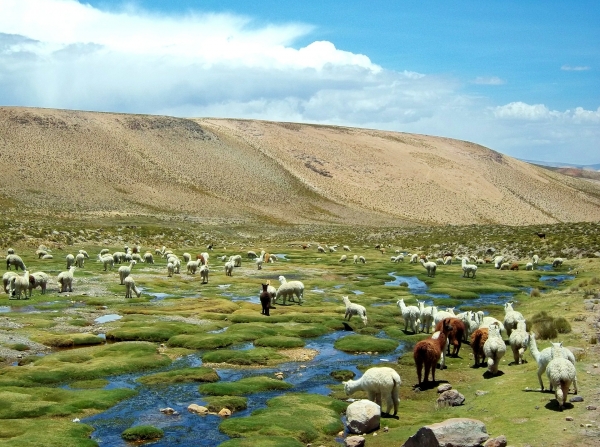Mobilizing financial resources to support sustainable development

In the last decades, steps have been taken toward sustainable financing through a variety of new sources, mechanisms and tools. A basic premise in sustainable financing is the need to build up a diversified funding that can ideally bring together both private and public stakeholders into sustainable objectives in the long run. A wide range of initiatives have been promoted in the Andes, including efforts to mobilize funding for key protected areas and foster the provision of critical ecosystem services, especially hydrological services. For example, water funds have been established in several Andean cities to finance watershed conservation by providing benefits to land owners. Nonetheless, mobilizing additional funding to support and foster sustainable development at a landscape level remains a main challenge.
Mobilizing sufficient funding to achieve sustainable development goals, along with the effective and coherent use of available financing to strengthen synergies, is one of many critical barriers that still need to be addressed. This is especially important given the complex social, economic, political and institutional settings that are common to many mountainous regions around the world. In the Andean countries in particular, many efforts promoting sustainable land management face conflicting interests with national priorities, including a rising interest in mining and major energy infrastructure. Additionally, local economies and livelihoods have become much more focused on commercial strategies and have developed strong linkages toward growing cities. Innovative strategies are therefore needed to align development and conservation objectives and to overcome shortcomings in financing for sustainable development.
A first and very basic step towards mobilizing funding is to understand the current trends of investment: who is investing, how much and where (both thematically and spatially). This involves identifying different sources of funding (e.g. public, private, international cooperation) with usually different sectorial priorities (e.g. agriculture, energy, and infrastructure). Unfortunately, in many developing countries this information is frequently not available, and rather disproportionate efforts are required to collect this kind of data at different levels. Ideally, this information should be produced on a regular basis, under standard procedures, by official sources. Furthermore, this information should be spatially explicit in order to analyze the linkages between investments and landscape changes.
In the case of the Andean region, most of the current investment has been carried on—or at the very least encouraged— by governments at both national and subnational levels. Public finance in the region is diverse and includes instruments from annual government budgets, to sectorial projects proposals (for instance, funding available through the mining canon in Peru), and even seed capital offered to small entrepreneurships. Although public-private partnerships are an encouraging and promising way to mobilize new sources of funding for the future, it is now vital to find other ways to mainstream sustainability within decision making of public agents who can have a profound impact on both ecological and social systems. Governmental land use plans provide an opportunity to influence public funding and to target key areas embedded in rapid land use change dynamics. Such land use plans also provide opportunities to monitor the impacts of stakeholder interventions and to promote smart climate investments in key development projects. In order to do so, however, strong relations with subnational governments need to be built, providing better access to key information and enhancing their institutional capacities. Thus, as much as mobilizing financial resources can be considered a goal to support sustainability, it should also be thought of as a mean to enhance capacities and to assist decision making in a more integrative way

Facebook comments